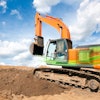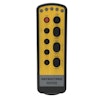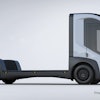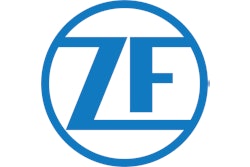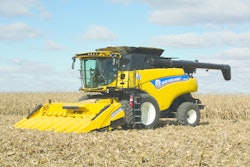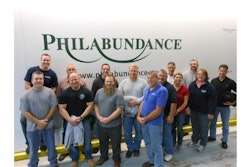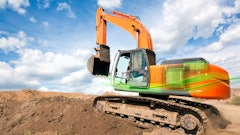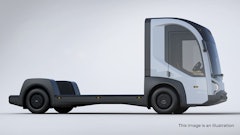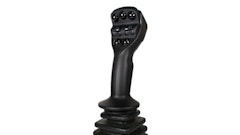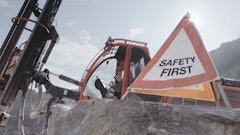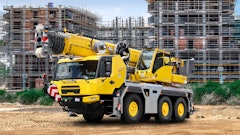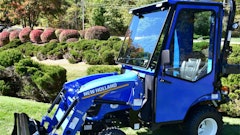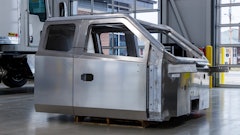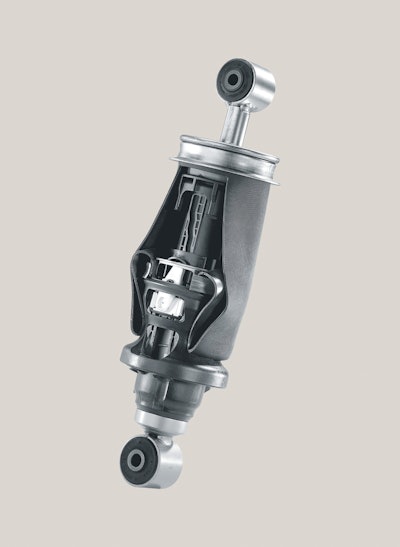
In rugged environments, especially farming applications, cab suspension systems allow the cabin to be isolated from the excitations of the chassis and driveline while traversing uneven terrain. It therefore helps to improve operator comfort and reduces stresses on both the driver and vehicle, especially fatigue of cabin mounted equipment such as electronics. New cab suspensions must also take several challenging factors into consideration, including higher temperatures around the engine bay, contaminants and space constraints.
As operator and vehicle benefits of cab suspensions have been proven, market expectations of the system have increased. “Initially, cab suspensions were available on the high end range of the market only,” explains Georg Memmel, Chief Engineer - Damper Technology, ZF Friedrichshafen AG. “Over the years, due to increase of customer awareness, the systems proliferated in vehicle ranges below the high end models. This proves clearly the need in the market for improvement of comfort.”
Since off-road vehicles are used on very different surfaces, it is essential that a manufacturer source or create a system that is able to work under very different conditions. According Memmel, current cab suspension systems available in the market are based on three different configurations: hydro-pneumatic, steel spring/shock absorber modules, and air spring/shock absorber modules.
“The suspension used is driven by cost, vehicle architecture and functional requirements,” says Memmel. “Active hydro-pneumatic systems are used where the highest level of functionality is to be implemented. The drawbacks of these systems are system cost, tuneability of damping function and power consumption.
“Conventional damping in combination with either mechanical springs or air springs is the most used configuration. Steel springs are used where cost is critical or air supply is not available as a standard configuration. In some cases, mechanical springs and mechanical spring adjusters are used to compensate for variation in cabin weights. Air springs are used where air supply is available and the benefits of air springs (low natural frequency, leveling of cabin) are relevant for the customers.”
ZF’s damper/spring configuration, for example, is developed and individually tuned for each application’s requirements specifically, usually with the customer present. The company’s CALM (Cabin Air Leveling Module) system, an air spring with integrated leveling for air suspensions, was created to provide the customer a solution with reduced total cost of ownership (TCO).
“One of the challenges we faced during CALM’s development was packaging the valve inside a standard air spring,” Memmel recalls. The technical challenges were solved by working together with a capable supplier for the leveling valve. “CALM is tamper-proof, which ensures that the stroke in jounce and rebound is always maintained, otherwise impacts in either direction harm comfort and induce impact loads into the cabin structure.”
CALM is more than just a suspension system, as it also provides self-leveling. “As more customers see the benefits of air spring suspensions for cabs, a leveling system is needed. With CALM, air suspension is a small step from mechanical suspensions, as it is a plug-and-play solution without additional components to be packaged, specified, procured and installed. So, CALM is a solution that makes the step to an air suspension easier compared to conventional air spring systems,” says Memmel.
Recently, ZF launched a variable damping system CDC (Continuous Damping Control) in off-road cab applications. “A lot of attention is given to the fine tuning of the damping function and the adaptation of the air spring to the application,” says Memmel. The CDC system constantly calculates the specific damping forces needed at any given moment of vehicle operation based on sensor data fed into the ECU. “State of the art algorithms are used to optimize under all conditions,” Memmel says. ZF is currently working on a solution to allow the CALM and CDC systems to be combined.
Just as the past several years called attention to the efficiency benefits that can be gained from improved operator comfort which drove cab suspension expectations for customers, so too will the next several years be focused on ways to enhance existing cab suspensions for improved operator comfort to lead to operational efficiencies perhaps still unrealized.

